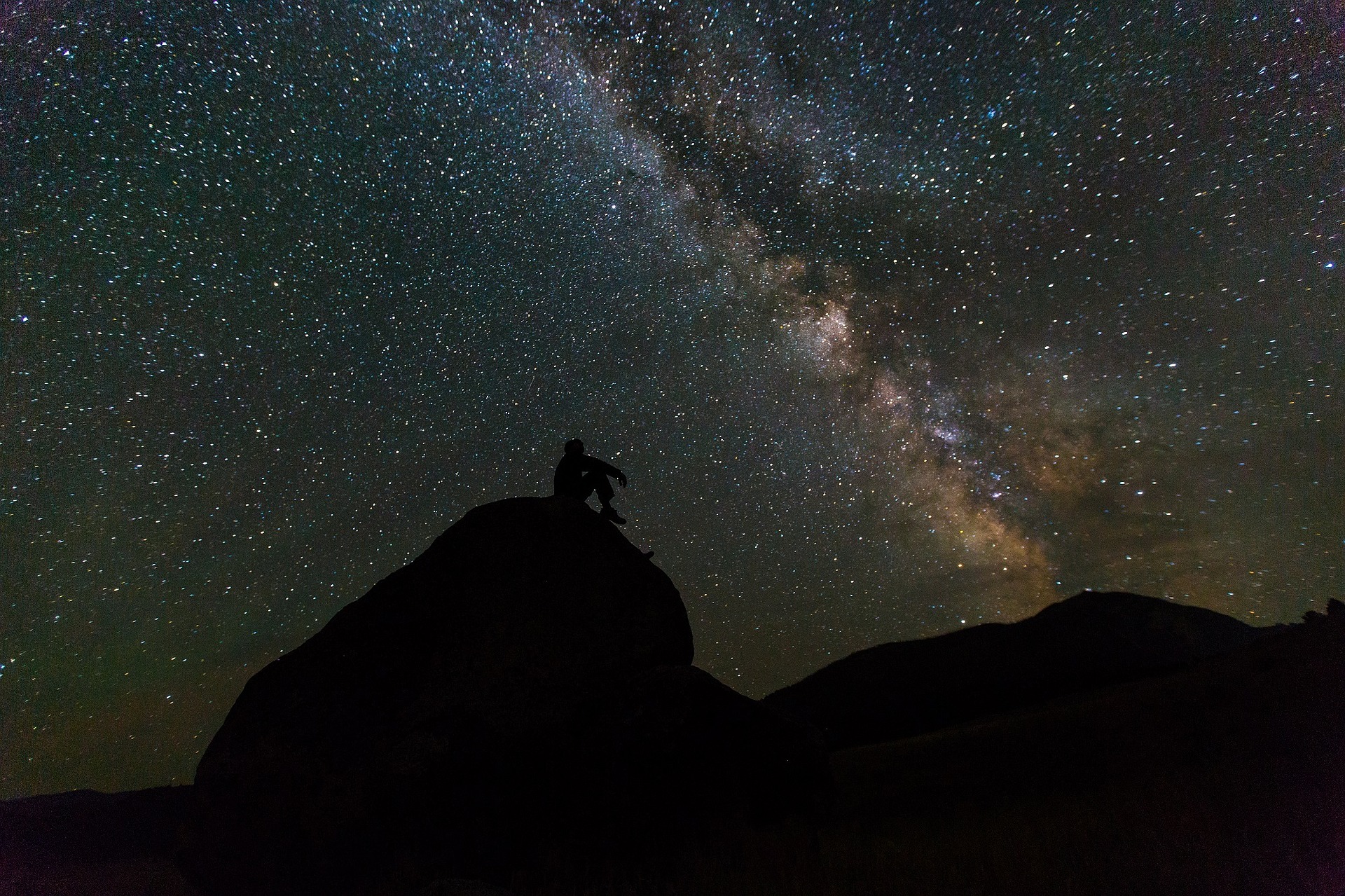
November 1, 2019, by Brigitte Nerlich
Astrogenomics: Integration and inspiration
I should have blogged about embryo editing in Russia. I should have blogged about Netflix’s ‘Unnatural selection’ series on CRISPR and genome editing. I should have blogged about prime editing, but life is getting in the way at the moment.
That doesn’t mean I don’t look at twitter once in a while (au contraire!). So, while idly browsing my twitter stream, I saw a tweet from Christopher Mason saying “Slides from my talk today at the #HGNYC conference about our lab’s work on astro-genomics and other genomics plans”.
I thought: astrogenomics, whatever next! I more or less tweeted that exclamation and a tweet came back from John Greally, an expert on clinical genomics and my go-to person for epigenetics, saying: “We used the term in a fun perspective paper.” Interestingly #HGNYC in Mason’s tweet stands for “Eighth human genetics at NYC conference”, and I think both Greally and Mason were there. Astrogenomics can be quite localised it seems!
Anyway, I downloaded the paper Greally referred to and was quite surprised by what I found. It was about using astronomy as an inspiration for how to deal with big data in genomics.
When reading the term astrogenomics, I had expected to find something like astrobiology with a new genomic twist. I googled a bit and found that there are indeed a few instances where people advocate an integration of genomics with astrobiology in order to study life on earth, especially microbial life “as a surrogate for understanding how life could have emerged elsewhere in the universe” on the one hand, and for using synthetic biology to tailor-make microbes that could function in extra-terrestrial environments on the other.
The field also deals with how humans function in such environments, physiologically, genetically and otherwise (what I call space biology) and the powerpoint presentation by Christopher Mason deals with that, referencing for example the somewhat contested twin astronaut study that was recently in the news.
So we have two uses of ‘astrogenomics’, one where genomics takes inspiration from astronomy and another where genomics is integrated with astrobiology and/or space biology. (Other uses are emerging, one inevitably related, as with epigenetics and microbiomics, to ‘woo‘…)
Astronomically big data
I shall focus here on the first use of astrogenomics, as that was the more surprising one.
The paper Greally referred to in his tweet was by Aaron Goldon, S. George Djorgovski and John M. Greally, published in Genome Biology in 2013 and entitled “Astrogenomics: Big data, old problems, old solutions?” The article should still be of interest to genomics people as the issue of big data is not getting any smaller. It was also interesting to me, as it contained some nice metaphors.
The paper advocates that the genomics and epigenomics communities take inspiration from astronomy for how to deal with big data. I became aware of the big data issue in 2012 and started to explore some of the metaphors used then in a blog post. The 2013 paper on astrogenomics uses some of them, namely ‘data deluge’, ‘data avalanche’ and ‘data tsunami’. They all refer to a huge ‘data universe’ that has been emerging in astronomy and is now emerging in genomics.
In one case, the advent of new digital imaging detectors and more and more sophisticated telescopes and observatories brought about this explosion in data; in the other case, the advent of high-throughput DNA sequencing, advances in bioinformatics etc. led to a ‘big data predicament’.
Astronomy tackled these issues through setting image standards, using metadata, and establishing a Virtual Observatory framework. This dealt not only with the data deluge but also with the human beings that had to cope with that deluge. The new way of dealing with data assured interoperability, flexibility and community engagement. This is called metaphorically a ‘federated data ecosystem’ or a ‘common cyberecosystem’.
The article ends by appealing to funding agencies to step in and fund such a new open, interactive and integrative approach to big data in genomics. It says (bringing the main metaphors structuring the article together): “With the creation of a cyberecosystem in which evolutionarily convergent software development can take place, the risk of developing dead end software is diminished, the security of highly sensitive sample data is enhanced, and the big data deluge can be stemmed, to the benefit of all.”
My impression is that not a lot has happened in this respect since 2013, but I might be wrong! Astro-Brexit
When writing this post, my hope was that I’d get away for a bit from life and Brexit. However, that hope is, as we all know, astronomically small, indeed non-existent. When looking through Mason’s slides on genomics and astrogenomics, I came across one slide that said “Chromosome 3 and Brexit” – which startled me. It turns out that it refers to an article published un-peer-reviewed in 2018 on bioRxiv entitled “Genetic consequences of social stratification in Britain”. This working paper was immediately ‘peer-reviewed’ online – openness is good! If I am not wrong, it has just been published in a peer-reviewed journal now, namely Nature Human Behaviour. Have look!
Conclusion
When thinking about what needs to be done about big data in genomics and epigenomics as laid out in the 2013 paper, I fear that nothing much will be done, as, at this very moment, our eyes are glued inexorably to the drama of daily politics wherever we are in the world. This leaves no time, really, to look at the stars or indeed to look across disciplines for inspiration on how to advance science in society.
Image: Pixabay – Milky Way
No comments yet, fill out a comment to be the first

Leave a Reply